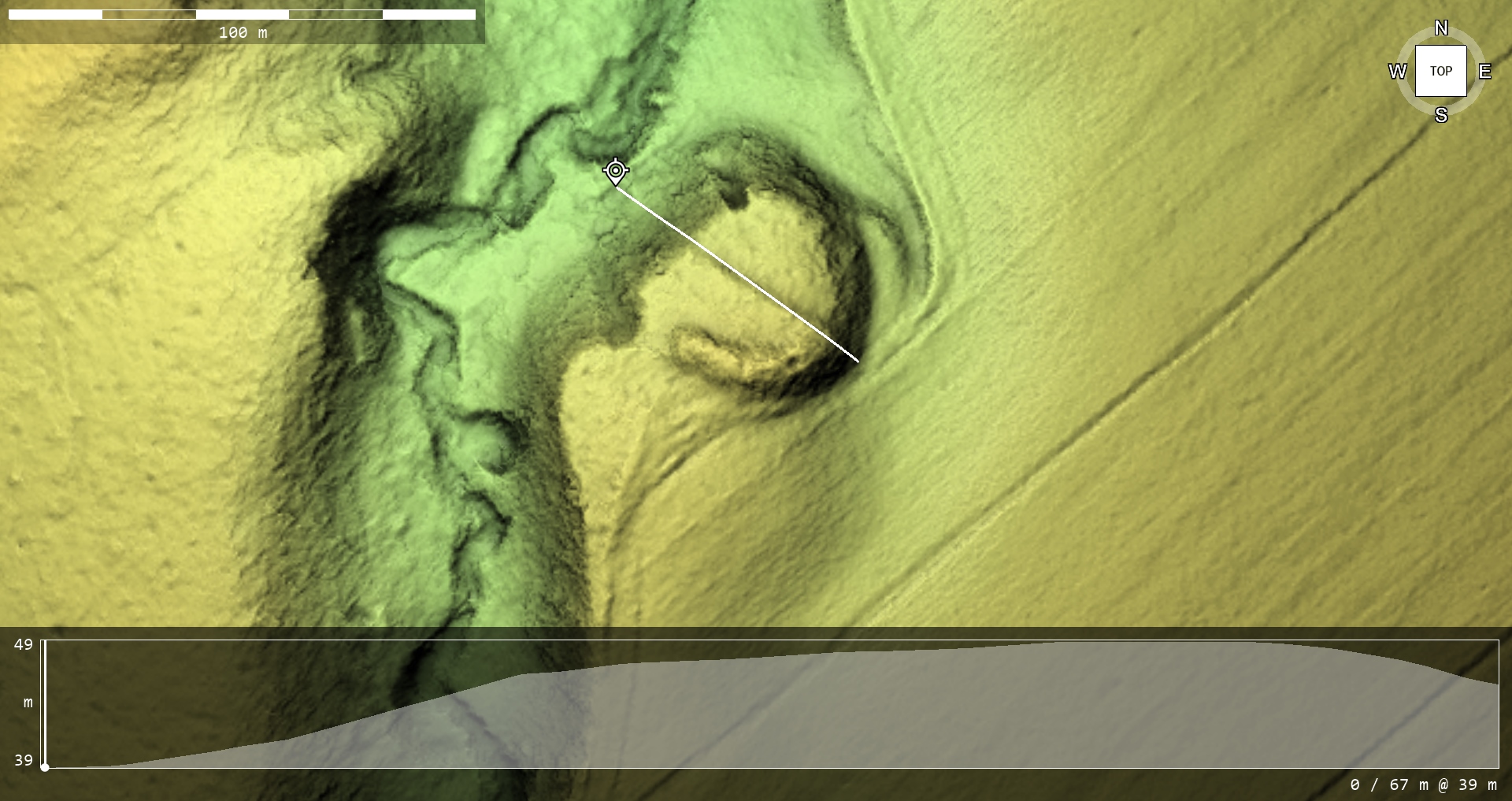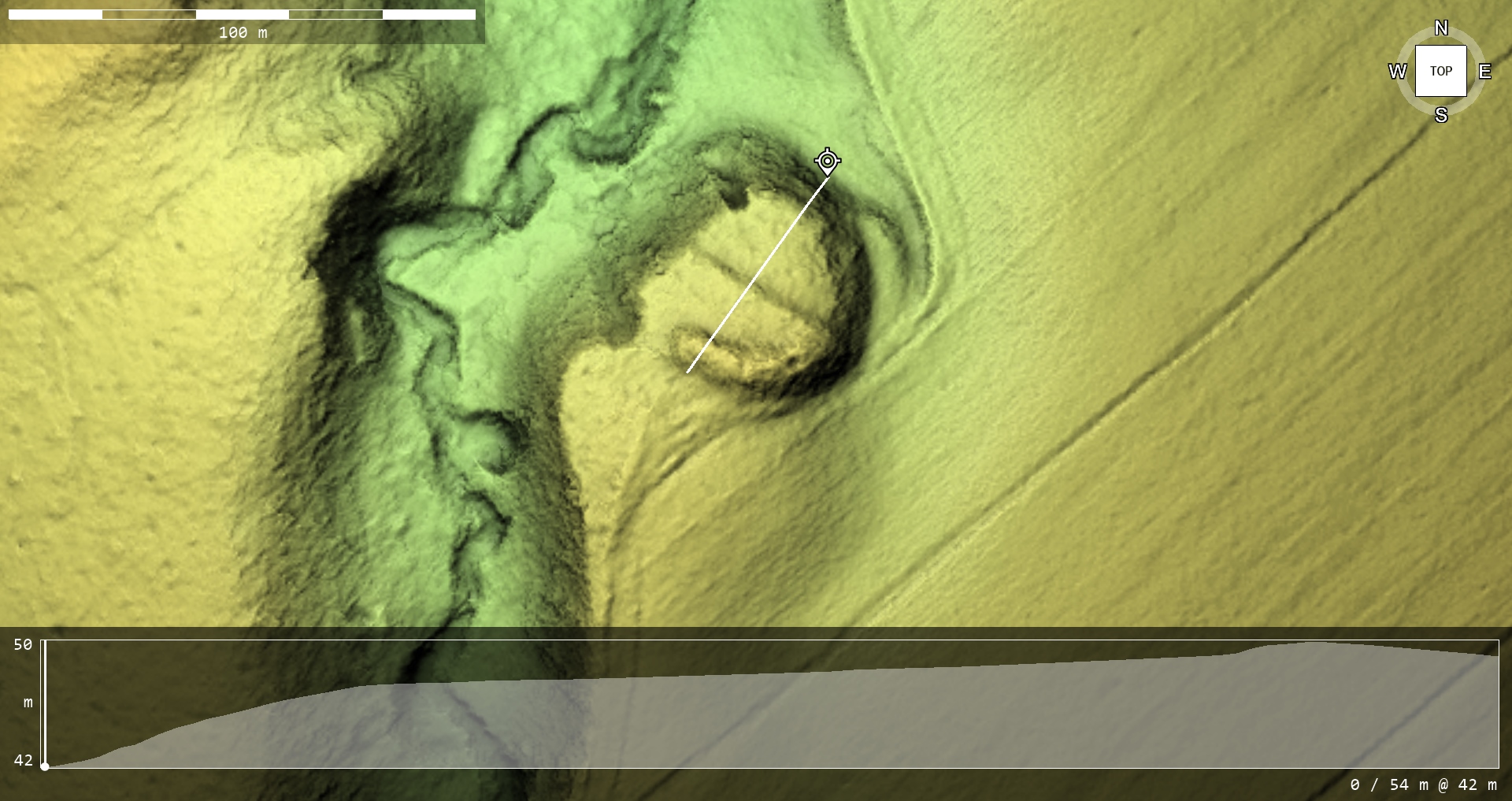The following text is a translation of Ernests Brastiņš’ 1926 book Latvijas pilskalni (Latvian hillforts), Volume 2: Zemgale and Augšzeme. Some of the geographical and archaeological information may be out of date.
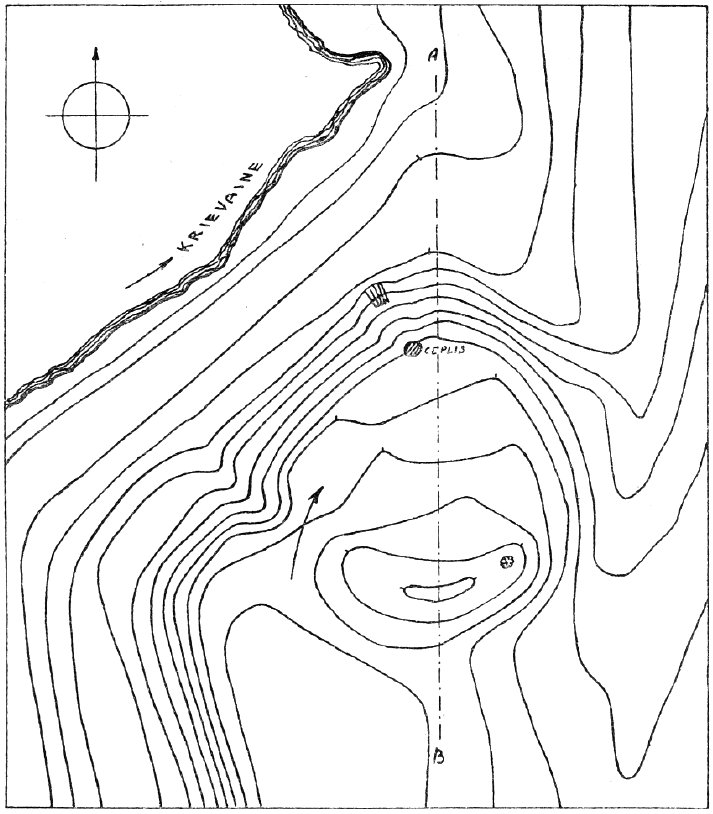
Survey scale 1:1000. Contour interval 1 m. Surveyed on June 28, 1923.

Section drawing of the hillfort, A to B. Scale 1:1000.
A few dozen steps south of where the Krievainīte river falls into the Skujaine river, there is a fortified place known as Kiln Hill. The name comes from a lime kiln built on the northern side of the earthwork by the owner of the Kamradzes homestead. No earlier name has been preserved. The Kamradzes homestead is located in the Kalnamuiža parish of the Jelgava county, 7 km to the southwest of the Kalnamuiža manor in Tērvete.
The fortification is constructed on a 10 m high promontory, bordering to the west on the Krievainīte gully and to the north and east on a shallow valley gradually descending into arable fields. To the south, the promontory is separated from the fields by a 2 m high earthwork. A depression from where the earth for the construction was taken is visible in front of it. The resulting small, rounded hilltop is on average 35 m across, sloping towards the north.
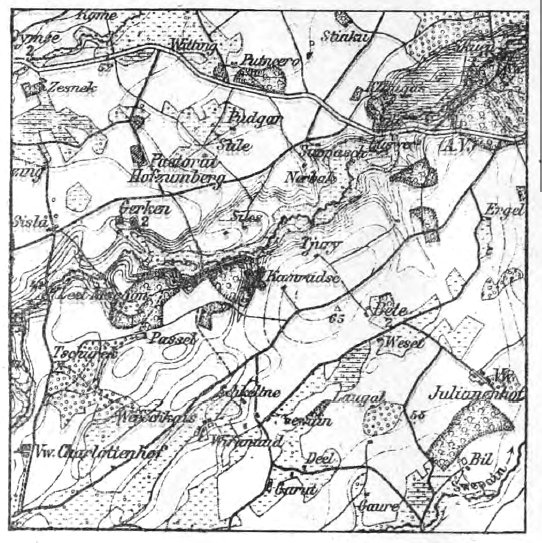
Area plan. Scale 1:100.000.
The fortification has an unusually wide, 5 m, entrance at its western end. It would have been even wider but was narrowed by digging a notch into the embankment.
The hill is composed of sandy clay and is overgrown with coniferous forest.
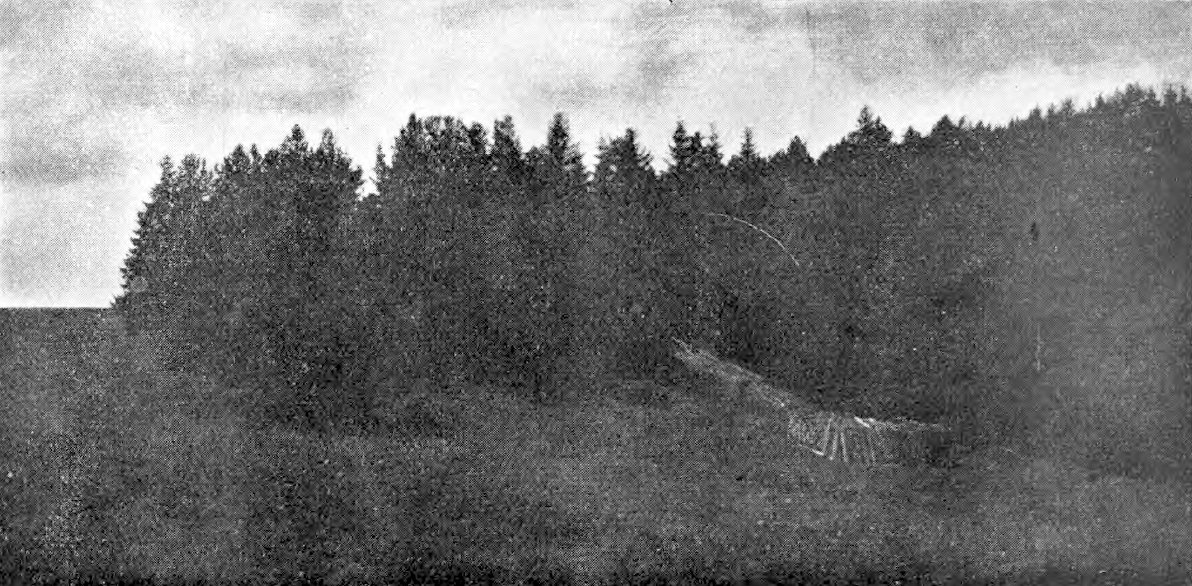
Kiln Hill from the north.
It is not known whether the hill has ever been plowed. However, the earthworks seem incomplete or unfinished. Hardly any cultural layer is present. Nothing has been found on the hill itself to provide clues of its origin. Neither have any legends been recorded. Only the old man Stops who once lived in Kamradzes used to tell that many bones had been found in the field near the river which gave it the name “Dead men’s field”. In 1923, the owner of Kamradzes gave several brooches found in the field to the War Museum in Riga.
The Kiln Hill appears to be the ancient fortification built by Couronian mercenaries when the Livonian Order forces were waiting for the return of Lithuanians from Talsi. According to the chronicles, a fierce battle took place here at the Skujaine (Schenen) river, ending in German victory. The supporting evidence is not only the “dead men’s field” but also the river banks which only here are steep enough to build the bridge mentioned in the chronicles. Elsewhere the banks are so flat that the river submerges them during spring tide.
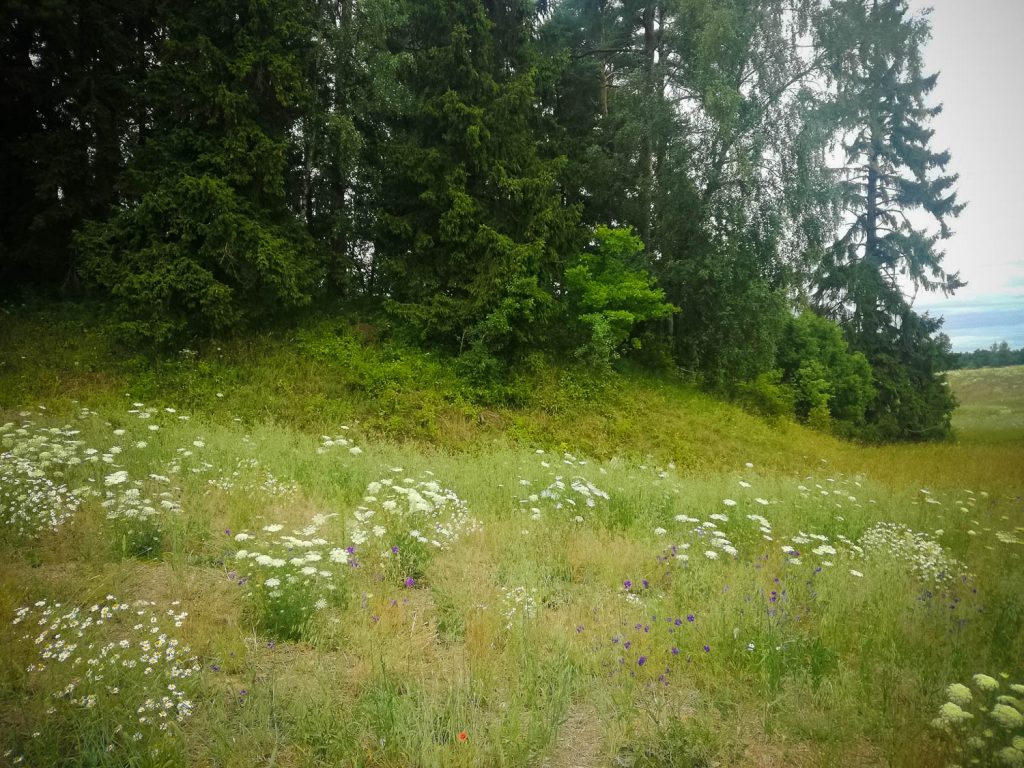
Kamradzes hillfort. Photo by Vigo Leitholds.
- Brastiņš E., Latvijas pilskalni. Zemgale un Augšzeme. — Pieminekļu Valde: Rīga, 1926.
